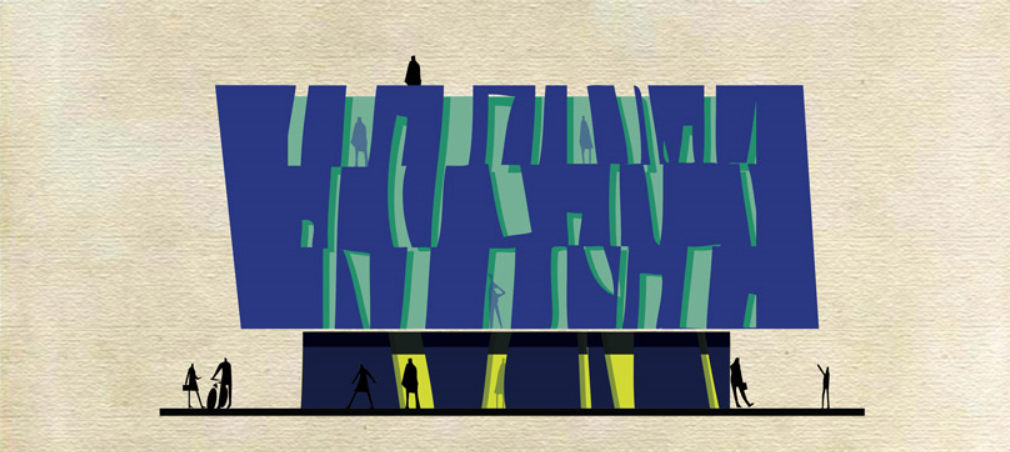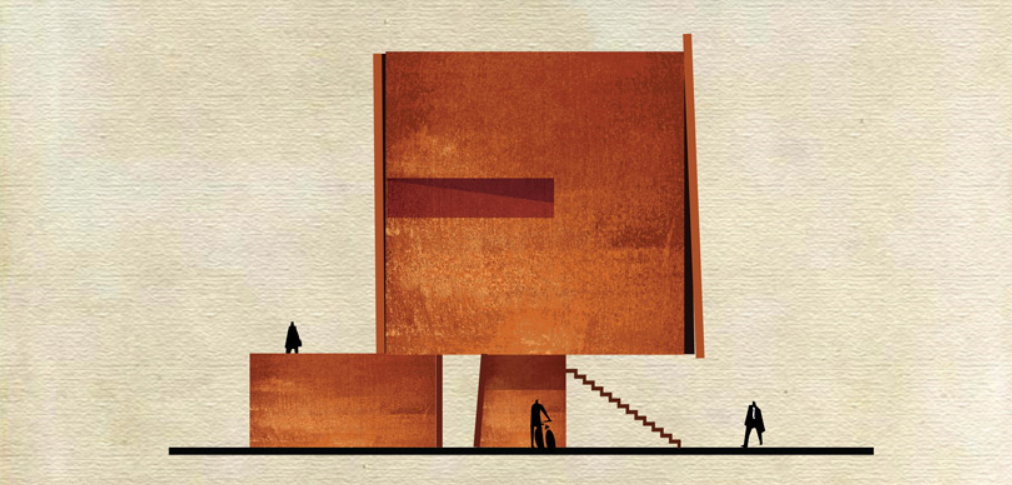Art & Architecture
We see use of the words Art & Architecture in many varieties and combinations. Whether in the context of a travel guide for historic cities or the curriculum for university programs the two are seen and felt to be linked even by association. It is a compliment to both as the “Art of Architecture” or “Architecture as Art” elevates both to a level the words themselves imply.
For those of us whose DNA lives with all of these phrases but, whose daily work sometimes looks for tangible reinforcement it was with great interest that I recently stumbled upon the work of Federico Babina. As architects, many of us remain committed to drawing, painting and art in general. But, I wonder how many artists ever dabble in architecture?
Babina has a dual-identity as both an architect and illustrator. He posed this very question as to what a building would possibly look like if designed by an artist. He decided to answer his own question by designing and illustrating a structure for each of twenty-seven artists in his Archist series.
To even undertake such a venture and imagine what a building designed by artists such as Picasso, Dali, Serra or Andy Warhol might look like takes a remarkable leap of faith if not a sense of adventure. And to likely keep the intent as an academic exercise, Babina’s illustrations, as shown in this article, are done in a more whimsical style while still being carefully-crafted. The resultant buildings are both believable and beautiful. Based upon his assumptions, the endeavor offers us an intriguing window into that previously-mentioned desire for “tangible reinforcement”. It openly invites us to look deeper into this relationship between Art and Architecture.
Personally, I find it both comforting and inspiring to imagine more artists as architects, pushing us ever deeper to the commitment that our work should continually aspire to the level of “Art”. Different than the work of many artists, the work of an architect is typically on display for public viewing. But, if we viewed it through the lens of the artist, the canvas and the conviction to defend it might be even stronger. Perhaps this is Babina’s message.


